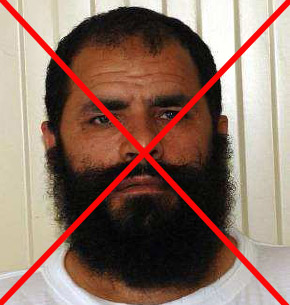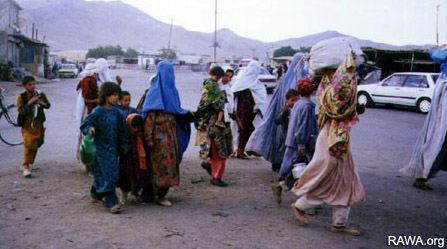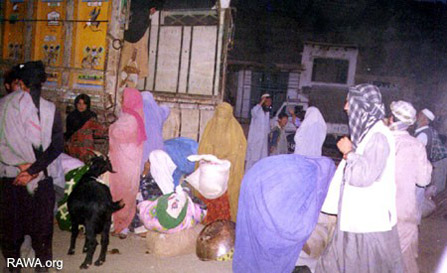By Nathan Hodge
SHEYKHAN, Afghanistan—Taliban forces led by Mohammed Fazl swept through this village on the Shomali plain north of Kabul in 1999 in a scorched-earth offensive that prompted some 300,000 people to flee for their lives.
Fifteen years later, local residents here are responding with fear and dismay to the U.S. release of the notorious commander, along with four other Taliban leaders in exchange for Sgt. Bowe Bergdahl, the only American prisoner of war who was held by the Taliban. The group released a video on Wednesday showing the hurried handover a few days earlier of the American captive, looking gaunt and dazed.
The villages of Shomali were once the orchard of central Afghanistan, and the plain’s carefully tended vineyards were famous for their grapes.
When the Taliban seized control of this area from their Northern Alliance rivals in 1999, they systematically demolished entire villages, blowing up houses, burning fields and seeding the land with mines, according to two comprehensive studies of war crimes and atrocities during wars in Afghanistan and human rights reports. Mr. Fazl played a major role in the destruction.

Mohammed Fazl, Talib commander responsible for the Shamali attack.
“There was not a single undamaged house or garden,” said Masjidi Fatehzada, a shopkeeper in Mir Bacha Kot, the district center. “My entire shop was burned to the ground. There was nothing left.”
Khwaja Mohammad, a farmer in the village of Sheykhan, remembered how Mr. Fazl’s men took away his son, a civilian, and sent him to Kabul’s Pul-e Charkhi prison.
“They jailed him for nearly three years,” Mr. Mohammad said. “They took him when he was on his way from the bazaar to buy oil and flour.”
The release of Mr. Fazl and the four other Guantanamo detainees has become a hot-button political issue in both Afghanistan and the U.S. Critics complain that the Obama administration has freed some of the most dangerous militants.
One day after Sgt. Bergdahl’s release, the Afghan government protested the swap because it placed restrictions on the five, saying it sought “unconditional freedom of its citizens.” Under the agreement, brokered by Qatar, the five Taliban leaders are supposed to live in the Persian Gulf emirate under supervision for the next 12 months to prevent them from returning to violence.
Kabul’s protest underscored mistrust between Kabul and Washington at a delicate moment when the U.S. is preparing to drastically reduce its military presence in the country and a new Afghan president is about to be elected.
En route to Afghanistan on Sunday, U.S. Defense Secretary Chuck Hagel acknowledged that the U.S. government had only informed the Afghan government about the swap after the fact.
The release has been a boon for the Taliban.
Shortly after the exchange, the group posted a video of them receiving a hero’s welcome in Qatar.
Mullah Wakil Ahmad Muttawakil, the minister of foreign affairs in the Taliban regime that was ousted by the 2001 U.S.-led invasion, described the exchange as “an achievement for the Taliban” which gave the militant group a form of recognition.
“In terms of military significance, Fazl was the most important” among the freed Guantanamo prisoners, Mr. Muttawakil added.
Still, he thought Mr. Fazl and the four other freed detainees are more likely to pursue a political role in a potential peace process with Kabul rather than return to the battlefield.

Women and children fleeing the Taliban attack on Shamali in 1999. (Photo: RAWA.org)

People fled leaving everything behind. (Photo: RAWA.org)
More photos of the incident
A number of horrific incidents told by villagers (by RAWA)
Detailed reports of the forced displacement by the Taliabn
Another former Guantanamo detainee, Mullah Abdul Qayum Zakir, was the Taliban’s main military commander until stepping down, ostensibly for health reasons, earlier this year.
In addition to Mr. Fazl, other released detainees also played major roles in the former Taliban regime. Khairullah Khairkhwa, a minister of interior in the former Taliban government, served as the militant group’s liaison to al Qaeda leader Osama bin Laden, according to a 2008 Pentagon assessment. Noorullah Noori, once a senior Taliban military commander in northern Afghanistan, led Taliban forces against the U.S. and its Northern Alliance allies during the 2001 invasion, according to the Pentagon.
Pentagon assessments describe the two other former prisoners, Mohammed Nabi Omari and Abdul Haq Wasiq, as linked to other Islamic extremist groups, including al Qaeda.
Among the five, however, Mr. Fazl stands out as one with the strongest ties to involvement in wartime atrocities, Afghans familiar with the Taliban and human-rights groups say.
“Fazl is the case among the five where there is clear evidence that he had command responsibility for forces that committed atrocities,” said Patricia Gossman, a researcher with the advocacy group Human Rights Watch who has studied crimes committed during the Afghan civil war. “Shomali is the place where he was on the ground.”
Ms. Gossman added that evidence also places Mr. Fazl on the scene of a massacre of civilians in the Yakawlang district of central Bamyan province in January 2001. All of the parties in Afghanistan’s civil war that began in the 1990s were involved in atrocities and rights abuses, according to researchers.
“Relatively speaking, his crimes were no greater than those of many of the people the U.S. and other NATO countries have been happy to work with since 2001, including men who were involved in massacres,” said Kate Clark of the Afghanistan Analysts Network, a Kabul-based research group.
Taliban officials couldn’t immediately be reached for comment on Mr. Fazl or his role in these events.
Both candidates contesting the June 14 presidential election runoff have civil-war-era warlords accused of atrocities by human rights groups as their vice-presidential candidates.
Former Finance Minister Ashraf Ghani selected Uzbek former warlord Abdul Rashid Dostum as a running mate; his rival, former Foreign Minister Abdullah Abdullah, is running with ethnic Hazara former warlord Mohammad Mohaqeq.
On the Shomali plain, however, memories are still raw about the alleged role of Mr. Fazl and his men in war crimes.
Dil Agha, who was a young Northern Alliance fighter in 1999, said he escaped to the Panjshir Valley, an anti-Taliban redoubt, after the Shomali front line collapsed under the Taliban offensive.
“When I came back from Panjshir, this whole place was completely destroyed,” he said. “There wasn’t a single building standing.”
Months after the collapse of the Taliban regime in late 2001, the Shomali plain was still a wasteland littered with unexploded ordnance. Mine-clearance teams had barely begun the painstaking work of sweeping away the detritus of war, and many of the newly returned refugees from the fighting were still living in tents.
Assadullah, a local schoolteacher, still walks with a limp. He showed a reporter a bullet wound he said he received after was shot in the leg by the Taliban after trying to escape arrest.
“Taliban demanded I surrender a gun, but I told them I was a schoolteacher and I didn’t have one,” he said.
Khwaja Gul Ahmad, a 74-year-old farmer, said his son, Khwaja Ibrahim, was killed by Taliban artillery fire during the fighting in Shomali.
Standing by the grave of his son, Mr. Ahmad’s eyes welled with tears when he learned about Mr. Fazl’s release from a reporter. “If he is released, he will burn our houses again because he doesn’t shake hands with the government,” Mr. Ahmad said.
–Ehsanullah Amiri and Habib Khan Totakhil contributed to this article.



